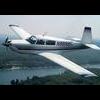-
Posts
309 -
Joined
-
Last visited
-
Days Won
1
xftrplt last won the day on December 10 2012
xftrplt had the most liked content!
The recent visitors block is disabled and is not being shown to other users.

xftrplt replied to Seth's topic in Miscellaneous Aviation Talk

xftrplt replied to Seth's topic in Miscellaneous Aviation Talk

xftrplt replied to schwanlib's topic in Avionics/Panel Discussion
Tagged with:

xftrplt replied to aaronk25's topic in Modern Mooney Discussion
We have placed cookies on your device to help make this website better. You can adjust your cookie settings, otherwise we'll assume you're okay to continue.